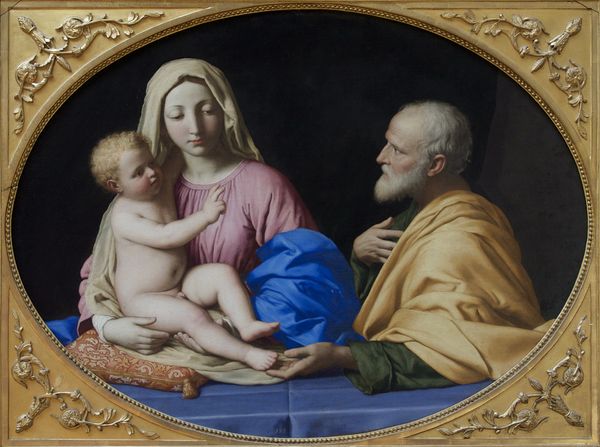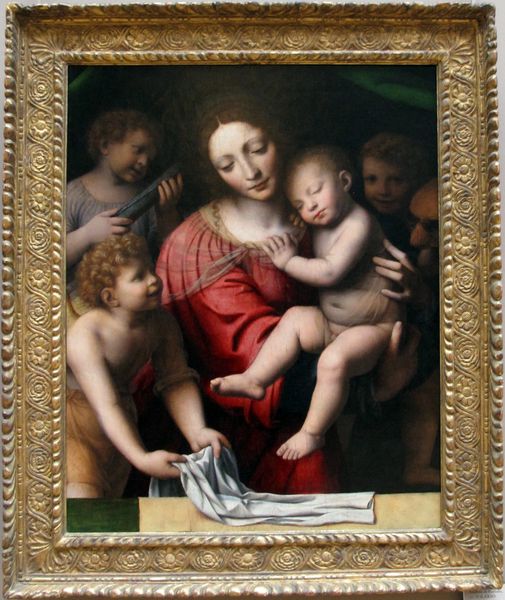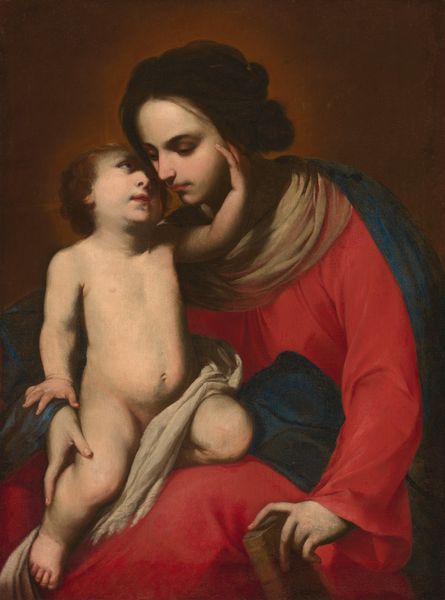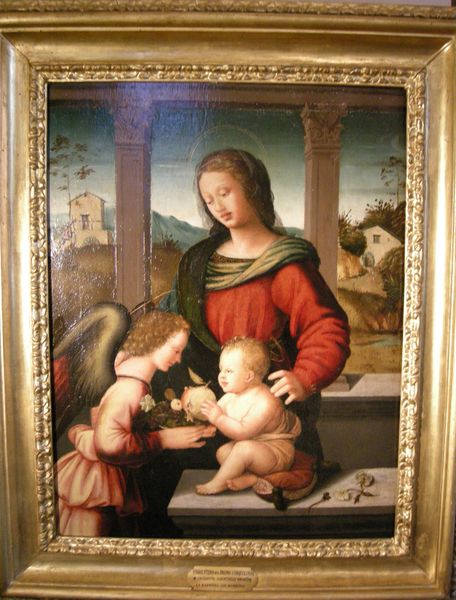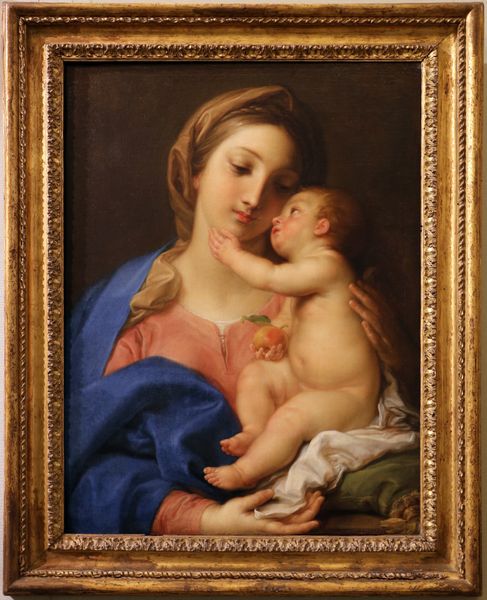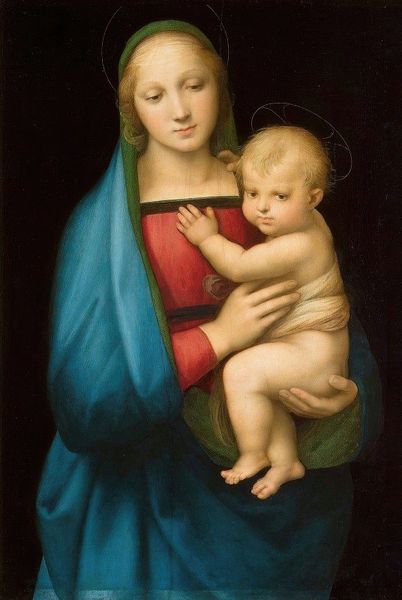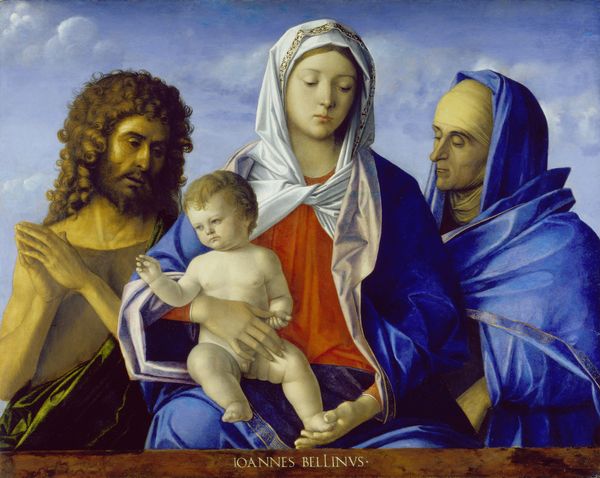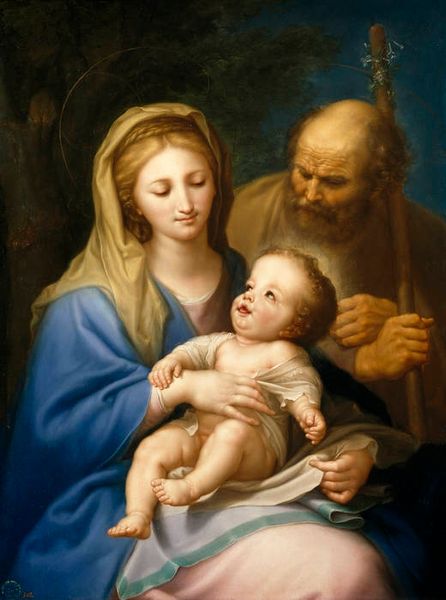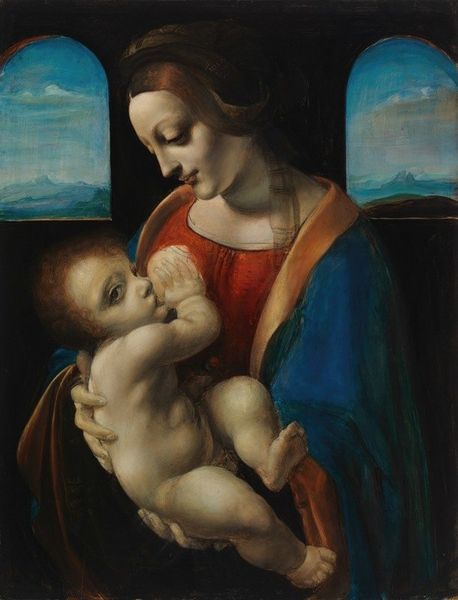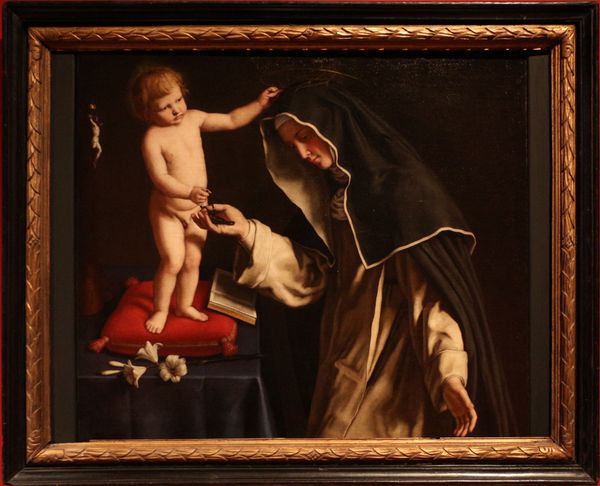
painting, oil-paint
#
portrait
#
baroque
#
portrait
#
painting
#
oil-paint
#
figuration
#
history-painting
#
realism
Copyright: Public domain
Sassoferrato painted The Holy Family sometime in the mid-17th century. It's an image which encapsulates the values of its place and time. In post-Reformation Italy, religious imagery served as a vital tool for the Catholic Church, reinforcing doctrine and inspiring piety among the faithful. The sweetness of the Virgin's face here, the tenderness of the scene, would have struck a chord with contemporary viewers, encouraging them to emulate the virtues of the Holy Family in their own lives. But this idealized vision also reflects the social realities of the era. The emphasis on family values, the clear gender roles, and the implicit endorsement of social hierarchy all speak to the conservative, patriarchal society of seventeenth-century Italy. To fully understand this work, we would need to delve into the archives of the period: religious tracts, sermons, and even personal diaries can offer invaluable insights into the cultural context that shaped its creation. Only then can we begin to appreciate the full significance of this seemingly simple image, and its role in shaping the social and religious landscape of its time.
Comments
No comments
Be the first to comment and join the conversation on the ultimate creative platform.
